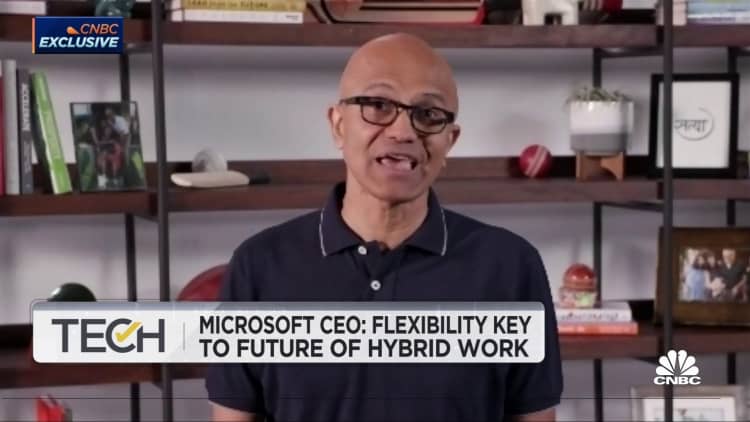Microsoft said Monday it's adding features for its cloud-based calling service that will make it more competitive against Zoom.
Microsoft is upgrading its Teams Phone service — which is part of the Teams communication app — to include the ability to transfer calls among devices, take calls in vehicles through Apple's CarPlay and transcribe calls. It will also be able to identify spam calls, integrate contact center software and make calls to five additional countries through calling plans.
Zoom Phone has all these features already, according to Zoom's website, though the spam service is still in beta. But Microsoft is also enhancing Teams Phone with a detail that Zoom is missing. In October, Teams Phone will add a virtual walkie-talkie, allowing users to push a button to talk.
Microsoft has been investing heavily in Teams, particularly since the early days of the pandemic, when consumers flocked to Zoom because it was easy to download and use from any device. In March 2020, Microsoft said it would allow users to upload custom virtual backgrounds for video calls, a feature that had been available in Zoom for months.
Microsoft CEO Satya Nadella told analysts in July that Teams Phone had almost 80 million monthly active users. At the TechCrunch Disrupt conference last week, Slack CEO Stewart Butterfield said Microsoft has made its intentions pretty clear.
"Over the last year, maybe even 18 months, I think Microsoft's preoccupation with killing us has shifted somewhat to a preoccupation with killing Zoom," Butterfield said. Salesforce closed its acquisition of Slack earlier this year.
Microsoft is also releasing Operator Connect, a product it announced in March to let customers draw on their existing services from carriers such as NTT and Verizon to make calls. Zoom supports fast connections to existing landline carriers.
Telecommunications companies work directly with Microsoft, so customers don't have to launch integration projects on their own, Microsoft corporate vice president Jared Spataro said.
"I'm starting to see this really take off for us in terms of interest," Spataro said.
Zoom isn't sitting still, however. The company is using its stock market gains from the pandemic to bulk up beyond cloud-based video and phone calls. In July, Zoom announced its intent to acquire call center technology provider Five9 for $14.7 billion.

Call center agents can already use Zoom Phone with Five9. Now the same thing is possible with Teams Phone.
"I think whenever you have your own — they're going to pay a lot of money for acquiring their contact-center solution — I think they will of course try to make that fantastic," Spataro said.
To get Microsoft's Teams Phone service, organizations with at least 300 users must buy the high-end Office 365 E5 or Microsoft 365 E5 subscriptions. If they have a less expensive subscription, they can add the new features for a fee.
Microsoft said last month that it will increase the cost of Office 365 E5 in March. That will mark the first broad price adjustment since the company introduced the subscription bundle in 2011 as an alternative to traditional licenses.
E5 subscriptions represent 8% of the entire Office 365 commercial installed base, Microsoft CFO Amy Hood told analysts on a conference call in July. The company has over 300 million Office 365 commercial paid seats.
WATCH: Microsoft CEO: Flexibility key to future of hybrid work



